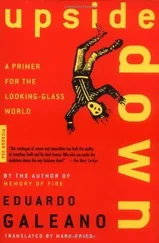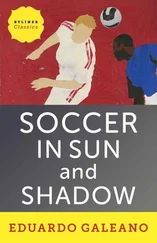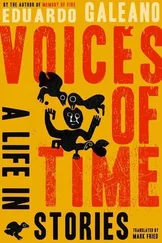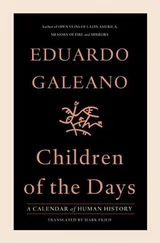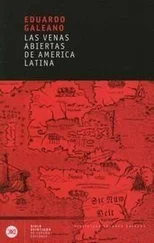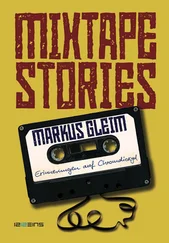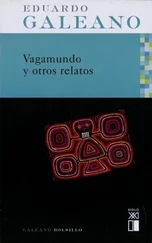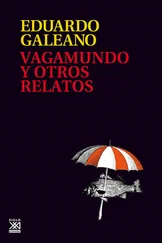And Romero sputtered that thousands of Salvadoreans had been tortured and murdered by the military, among them many Catholics and five priests, and that just yesterday, on the eve of this audience, the army had riddled twenty-five people with bullets in the doorway of the cathedral.
The head of the Church stopped him right there:
“Mr. Archbishop, do not exaggerate!”
The meeting did not last much longer.
Saint Peter’s successor demanded, commanded, ordered:
“You must reach an understanding with the government! A good Christian does not look for trouble with the authorities! The Church wants peace and harmony!”
Ten months later, Archbishop Romero was shot down in a parish of San Salvador. The bullet killed him as he was saying Mass, at the moment he raised the host.
From Rome, the pontiff condemned the crime.
He forgot to condemn the criminals.
Years later, in Cuscatlán Park, names on an infinitely long wall commemorate the civilian victims of the war. Thousands upon thousands of names are etched in white on black marble. The letters of Archbishop Romero’s name are the only ones that show wear.
From the touch of so many fingers.
THE BISHOP WHO DIED TWICE

Memory is held prisoner in museums and is not allowed out.
Bishop Juan Gerardi led an investigation into Guatemala’s terror.
One spring night in 1998, in the courtyard of the cathedral, the bishop presented the results, fourteen hundred pages, testimony from over a thousand witnesses. And he said:
“We all know that this path, the path of memory, is dangerous.”
Two nights later, he was found lying in his own blood, his skull smashed with a chunk of concrete.
As if by magic, the blood and fingerprints were immediately wiped away. Several people confessed, but their confessions were more like confusions, the advance party of a gigantic international operation to turn the murder into an impenetrable maze.
And thus occurred the second death of the bishop. Lawyers, journalists, writers, and criminologists for hire did the dirty work. New culprits and new evidence appeared and disappeared at a dizzying pace, shovelfuls of infamy were heaped onto the body of the victim to safeguard the untouchable impunity of the authors of this crime and of two hundred thousand murders more:
“It was one of the Communists who infiltrated the Church.”
“It was the cook.”
“It was the woman who kept the keys.”
“It was that drunk who slept in the park across the street.”
“It was jealousy.”
“Among fags, busting heads happens all the time.”
“It was revenge, a priest had sworn to get him.”
“It was that priest, and his dog.”
“It was. . ”

Love wanes, life weighs, death wastes.
Some griefs are inevitable. That is the way it is, and not much can be done about it.
But those in charge of the planet pile grief on top of grief, and then charge us for the favor.
We pay the value-added tax every day in cold hard cash.
And every day, in cold hard misfortune, we pay the grief-added tax.
The added grief comes disguised as fate or destiny, as if the anguish born of the fleeting nature of life were the same as the anguish born of the fleeting nature of jobs.

In the south of India, at the Nallamada hospital, a failed suicide revives.
Around his bed, smiles from the ones who brought him back to life.
The survivor eyes them and says:
“What are you expecting, a thank-you? I owed a hundred thousand rupees. Now I’m also going to owe for four days in the hospital. Some favor you imbeciles did me.”
We hear a lot about suicide bombers. The media blather on about them every day. But we hear nothing about suicide farmers.
According to official figures, India’s farmers have been killing themselves steadily, at a rate of a thousand a month since the end of the twentieth century.
Many suicide farmers die from drinking the pesticides for which they cannot pay.
The market drives them into debt, then unpayable debt drives them into the grave. They spend more and more, earn less and less. They buy at penthouse prices and sell at bargain-basement markdowns. They are held hostage by the foreign chemical industry, by imported seeds, by genetically modified crops. Once upon a time, India worked to eat. Now India works to be eaten.

Every year, chemical pesticides kill no fewer than three million farmers.
Every day, workplace accidents kill no fewer than ten thousand workers.
Every minute, poverty kills no fewer than ten children.
These crimes do not show up on the news. They are, like wars, normal acts of cannibalism.
The criminals are on the loose. No prisons are built for those who rip the guts out of thousands. Prisons are built as public housing for the poor.
More than two centuries ago, Thomas Paine wondered:
“Why is it that scarcely any are executed but the poor?”
Texas, twenty-first century: the last supper sheds light on the cellblock’s clientele. Nobody chooses lobster or filet mignon, even though those dishes figure on the farewell menu. The condemned men prefer to say goodbye to the world with the usual: burgers and fries.

All Brazil is watching.
A reality show in real time.
From the moment the criminal, he had to be black, takes the passengers of a Rio bus hostage one morning in the year 2000, television broadcasts every detail.
The commentators treat it as a mixture of soccer and war, the heartbreaking emotion of a World Cup final narrated in the tragic-epic tone of the invasion of Normandy.
The police lay siege to the bus.
In a long exchange of gunfire, a girl is killed. The crowd in the street shouts curses at the beast for whom innocent lives mean nothing.
At last, after four hours of shooting and other dramatics, a bullet from the forces of order brings the public enemy down. The police show off their trophy, critically wounded, bathed in blood, to the camera.
Everyone wants to lynch him, the thousands present and the millions watching.
The policemen pull him free from the angry crowd.
He gets into the patrol car alive. He comes out strangled.
In his brief passage through the world, he was Sandro do Nascimento, one of many children sleeping on the steps of the cathedral on a night in 1993, when it rained bullets. Eight died.
Of the survivors, nearly all were killed soon thereafter.
Sandro was lucky, but he was a dead man on leave.
Seven years later, the sentence was carried out.
He always dreamed of becoming a TV star.

All Argentina is watching.
A reality show in real time.
From the moment the bull, he had to be black, turns up in a Buenos Aires suburb one morning in 2004, television broadcasts every detail.
The commentators treat it as a mixture of bullfighting and war, the heartbreaking emotion of a corrida in Seville narrated in the tragic-epic tone of the fall of Berlin.
Читать дальше







